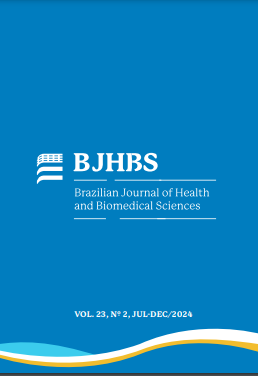The dental age estimation by the Demirjian, Willems and AlQahtani methods in a Brazilian population
DOI:
https://doi.org/10.12957/bjhbs.2024.88695Resumo
Introduction: Methods for estimation of dental age are highly reliable and their application plays an important role in the forensic field. Nevertheless, controversies remain regarding the accuracy and applicability of these protocols in specific populations. Objective: Evaluate the accuracy and applicability of the dental age estimation methods recommended by Demirjian, Willems and AlQhatani. Methodology: Two calibrated examiners analyzed 330 panoramic radiographs of a Brazilian population of both sexes, with ages ranging from 6 to 16 years (n = 30), according to each method. The values of the estimated ages were compared with the chronological age (Wilcoxon's test: Demirjian and Willems; Pearson's Chi-square test: AlQahtani; p<0.05). Results: For the Demirjian method, the estimated age showed no difference concerning the chronological age for the 9- and 15-years groups (p=0.758 and p=0.510, respectively), with an overestimate rate up to 1.1 years and an influence due to sex. The Willems method did not show differences for the groups from 11- to 15-years (p=0.5302, p=0.3622, p=0.9224, p=0.9426 and p=0.1024, respectively), regardless of sex, with an overestimate rate of 0.8 years at maximum. For the AlQahtani method, the highest accuracy rates were found for the 6- and 7-years groups (50% and 57%, respectively), with an overestimate rate up to 0.6 years, without any influence due to sex. Conclusions: The dental age estimated by the Demirjian, Willems and AlQahtani methods in a sample of Brazilian children and adolescents showed excellent match with chronological age, with the Willems method showing the greatest precision in the sample as a whole.
Downloads
Downloads
Publicado
Como Citar
Edição
Seção
Licença
Copyright (c) 2024 Brazilian Journal of Health and Biomedical Sciences

Este trabalho está licenciado sob uma licença Creative Commons Attribution-NonCommercial 4.0 International License.
Termo de transferência de direitos autorais/conflitos de interesses: após o aceite final do artigo para publicação, os autores deverão enviar o termo de transferência dos direitos assinados pelo autor principal representando cada um dos autores. Neste termo deverão ser declarados quaisquer conflitos de interesses.
